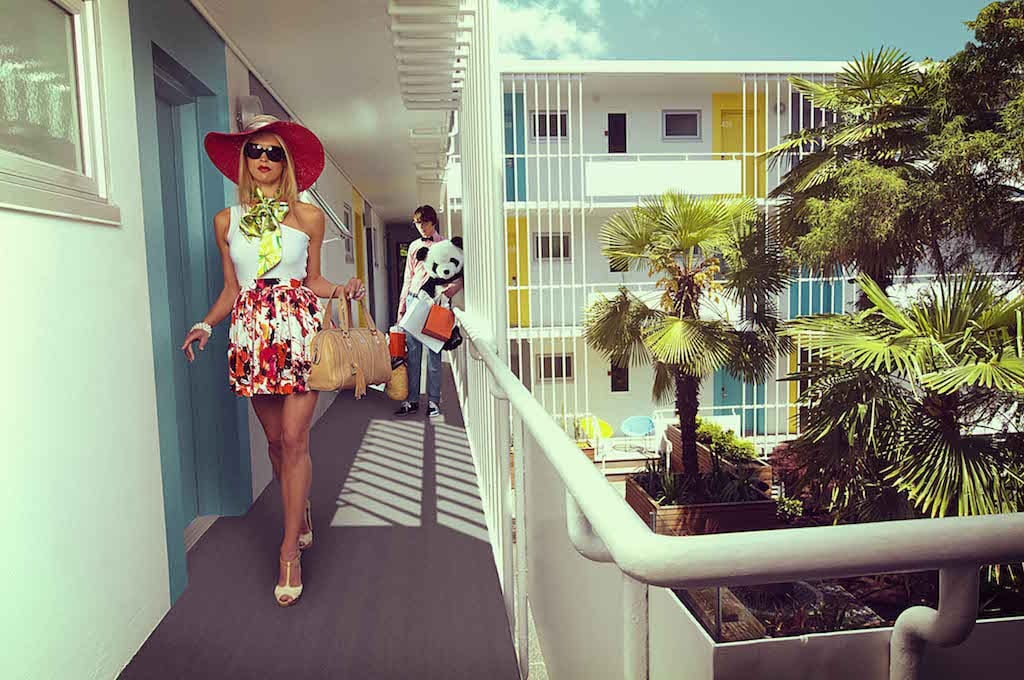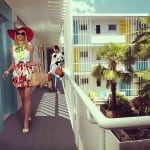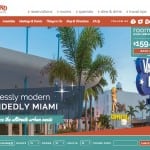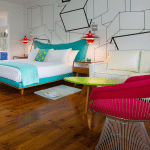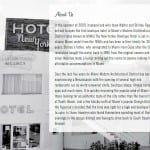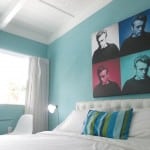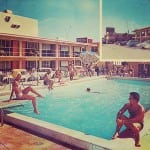Skift Take
An emerging lifestlye motel segment is developing for consumers seeking vintage style, indie personality, low rates and close connection to the community.
- The Burrard in downtown Vancouver epitomizes the segment’s sassy spirit
- Homepage of The Vagabond Hotel in Miami’s MiMo District
- Homepage of the New Yorker Boutique Hotel in Miami’s MiMo District
- Homepage of the Oasis at Gold Spike in downtown Las Vegas
- A room at The Vagabond Hotel
- History of New Yorker Boutique Hotel
- A room at New Yorker Boutique Hotel
- A room at Oasis at Gold Spike
- Landing page of The Burrard
- Back in the day at The New Yorker Motel Miami
- The Vagabond Hotel is a nationally registered historic property.
The sign on the building facade overlooking the palm tree-lined pool and pool bar says “Vagabond Motel,” but the name online reads “The Vagabond Hotel.”
So why is that? Originally built in 1953, the newly reopened Vagabond property on Biscayne Boulevard in Miami is most definitely a retro motel with everything that defines a motel. There’s the typical two-story, low-rise building with connected wraparound balconies, doors with direct outside access, and the quintessential little motel office below the last room at the end of the building.
Owner Avra Jain says, while she would prefer to call the Vagabond a motel as it should be, she’s not about to fight Google search. To compete well online, the property is positioned as a “boutique lifestyle hotel” to rank alongside the Curio and Canopy flags of the world. However, the vintage motel design and guest experience are the primary differentiators for the property in the Miami market.
Wallpaper, for example, is featuring half a dozen hotels in the next version of its incisive Miami city guide, and Vagabond is one of them.
Biscayne Boulevard is lined with over a dozen of these mid-century motels with groovy neon “googie” signs and protected historical status, although only a few are undergoing restoration. And it’s not just Miami. There’s a growing hospitality niche here expanding across the country for people enamored with the playful 1950s design, low room rates, close community connection and classic road movie vibe.
Alex Chang, the 25-year-old head chef at the Jetsons-inspired Vagabond Restaurant, is the hottest chef in town right now. Over 75% of the restaurant clientele is local, and during the StartUp Miami tech event on Monday, celebrity chef Tom Colicchio gave a shout out to the city’s two best chefs, Michelle Bernstein and Michael Chafetz, and Chang.
The original architect of the Vagabond, Robert Swartburg, also designed the industry-disrupting Delano on South Beach. The Vagabond’s updated rooms are fun, fresh and funky without any overly cloying nostalgia, and the crowdsourced Instagram artwork is unerringly local.
“From an architectural standpoint, there was a lot to save and preserve, so we’re now the gem of the classic 1950s motels on Biscayne,” says Jain. “It’s the angled blind, the bean poles, the cheese holes, the ticky-tacky, the googie and those things that identify the 1950s motel and motel diners, so that’s very important for us. We’re nationally accredited as a historic landmark, which is a big hurdle from a restoration standpoint, and certainly from a cost standpoint.”
Jain also owns a number of other properties including the old Knoxon Motel next door, which she is considering converting into a fresh market. She is also looking at converting the South Pacific Motel a couple blocks away into small offices, because the economics of running a 20-room hotel don’t add up in this location. Jain says the South Pacific project will be unique because it’s like a co-work space except entrepreneurs will have a storefront, and every unit will have a shower for people who want to bike to work.
The big shift here transcends the idea of the small indie hotel acting as a portal into the local community. In this instance, a small hotel operator is building the local community.
New Yorker Boutique Hotel, Miami
Shirley Diaz is the proprietor of the New Yorker Boutique Hotel, which was called a motel from its opening in 1953 until Hotel Impossible star Anthony Melchiorri told her to change the signage to “hotel” a few years ago. The original architect behind the property was Norman Giller who also designed the old Monterey Motel that’s now The Standard Miami Beach.
“The New Yorker Hotel’s architectural genre is called ‘MiMo,’ or Miami Modern, which is a style of architecture from the 1950s and 1960s that originated in Miami as a resort vernacular unique to the area,” says Diaz. “Post WWII architecture was all about the future and building the American dream and the possibilities that held. Technology advances here led to the invention of air conditioning that tremendously added to the comforts of living in Florida, and most importantly it allowed for a year-round economy. That’s why you’ll see an original ‘Air Conditioning’ sign still on our building.”
The property caters to more than 50% international travelers seeking mid-tier priced accommodations with central access to the beach and the booming Design District and Wynwood Arts District areas. Biscayne Boulevard was once the primary north-south thoroughfare running along Biscayne Bay before the I-95 highway, after which it fell into neglect during the last half of the 20th century. Today, there’s a robust community-led spirit to revitalize the corridor with new independent restaurants, shops, gyms and co-working spaces, while protecting the architectural landmarks.
Diaz relishes that small business collaboration, and she just partnered with the local Flavorish Market to install a pop-up gourmet store in her lobby.
“We’re looking at doing the same thing with local clothiers like the Week Ender located a few blocks away, along with artists and other creative people,” she says. “There’s a wonderful vintage store down the block as well, Fly Boutique, that’s popular in the neighborhood. They’re vintage, we’re vintage. It all works. Wynwood has a great art tour on scooters that we’re just getting to know. The great thing is that our neighborhood sweats creativity and ingenuity. There is no lack of interesting things, people or businesses to partner with.”
When asked for her thoughts about all of the big box hotel brands opening lifestyle hotel flags, Diaz answered, “They’re trying to create authentic when we just are authentic. We’ve been here a long time, and we plan on being here for a lot longer.”
To build on that Diaz just launched her new website last month, and she’s developing a series of new online content projects to showcase area special events and local businesses.
Oasis at the Gold Spike, Las Vegas
One of the most interesting urban redevelopments in the U.S. right now, downtown Las Vegas is undergoing sweeping changes with the influx of money provided by the Downtown Project, backed by Zappos CEO Tony Hsieh. Over the last three years, Downtown Project has developed and/or invested in over 300 companies operating in the urban core.
Reopened in October last year, the Oasis at the Gold Spike is one of those. Nowhere anywhere will you see the word “motel” mentioned on the webpage for the retro 3-story motel-style hotel. This is understandable. There are a lot of motels in Las Vegas off the Strip and throughout the region that don’t exactly align with today’s best practices in hospitality.
Distancing Oasis from that scene makes sense, but it negates the unique vibe at the Oasis that can’t be found anywhere else in the city. It really does feel like an oasis of sorts amid all of the larger high-rise hotels downtown, except for the El Cortez which is in a class of “authentic local experience” all of its own.
“What’s unique about the Oasis at Gold Spike, it’s so retro, it’s so old school, but you’re really blown away once you walk inside the front door and see how modern and chic it is,” says General Manager David Sosa. He adds that no one at the company uses the “M” word to describe the property, and that it never comes up.
The original property here was the Travel Inn Motel that opened in 1962.
The happy-chic ambience is perfectly communicated on the bouncy website designed to promote the property as the only non-smoking, non-gaming boutique lifestyle hotel in the area. High season weekend rates run $89-$109.
Like the Miami properties, the Oasis at Gold Spike is really an anchor for a once distressed community welcoming a surge of new residents moving into the area, many of whom are attracted to the Downtown Project story. The Oasis also helps spread the Downtown Project message and mission supporting the overall spirit of community building rooted in the collective psyche among so many of the small business owners and employees here.
Sosa says, “Having people stay with us opens up the other venues and business entities more to the consumer that wouldn’t necessarily experience those if they didn’t stay with us, or only visited for a few hours away from the Las Vegas Strip.”
The Burrard, Vancouver
Unlike the previous motels, The Burrard in downtown Vancouver is located in a well established and well-to-do neighborhood, surrounded by hotels with rates 3-4 times higher. Originally opened in 1956 as the Burrard Motor Inn, the 72-room property is positioned as a “cheeky, fresh and edgy boutique hotel with upscale furnishings, that’s not a flag property,” says General Manager Dani Pretto.
She too says the “motel” description is challenging when it comes to online search results, but the vintage motel heritage is celebrated in terms of the positioning.
“The motel influence is part of our branding and messaging because the building was designed in the retro, quirky style of a motel in that era, so that is outright in our marketing,” says Pretto. She explains that the owners gutted the building and reopened in June 2011, and they were adamant about retaining the overall architectural storylines and the calm energy within the interior courtyard garden.
The Burrard caters especially well to younger couples who are looking for “something a little romantic and special” in the $89-$149 range. Pretto says social media is “huge” and her guests expect the hotels they frequent to be active on social.
She also discussed how the inherent design model of motels always feels more connected to the surrounding community because the doors all open directly to the outdoors. There’s a lack of additional boundaries, in a sense, where hotel lobbies and public spaces act as a kind of decompression zone between the privacy of the guest room and the more uncontrolled urban environment.
With a motel, it’s often a more immediate experience, and people traditionally in these settings tend to spend the bulk of their time away from the property.
“We want our guests to get out into the city and have a fully authentic Vancouver stay where they really connect with the local community,” says Pretto. “A lot of our comments mention our cool staff, and how they’re not as formal, and how they like to recommend interesting places. We also have 16 complimentary Brodie Bikes so people can explore Vancouver like the locals.”
Greg Oates covers hospitality and tourism development. Email him at [email protected].
Have a confidential tip for Skift? Get in touch
Tags: las vegas, miami, vancouver
Photo credit: The Burrard in downtown Vancouver epitomizes the segment's sassy spirit. The Burrard Vancouver
